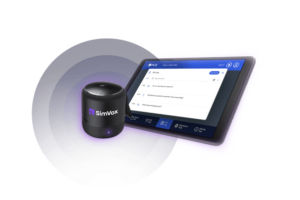About Medical Simulation – Resources, Jobs, Vendors & More…
Medical Simulation is the modern-day methodology for training healthcare professionals through advanced educational technology. Simply put, Medical Simulation can be the experiential learning every healthcare professional will need but cannot always engage in during real-life patient care. Medical Simulation has also been called Healthcare Simulation, Simulation in Healthcare, Patient simulation, Nursing Simulation, Surgical Simulation, and Clinical Simulation.
Medical Simulation sprang from the aviation industry, which has utilized simulation-based learning practices to train pilots since just after World War I.
Simulation allows for the safe training of learners engaging in activities that would otherwise be too dangerous to practice. For example, it is far too risky (and expensive) to send a new 747 jumbo jet pilot 40,000 feet into the air to practice a 3-engine failure drill. Whereas with a hyper-realistic hydraulic-enabled simulator, a new pilot could learn to perform such maneuvers safely on the ground.
Sponsored Content:
Similarly, hospitals should not risk a patient’s life during a real-life emergency by depending on clinicians without the proper certifications, experience, or confidence to perform possibly life-saving procedures. However, the need to train healthcare professionals in the team-based communication, cognitive thinking, and skills-based action necessary during such a stressful situation is vital to successful patient outcomes.
Medical Simulation Methodology
During a fully immersive Medical Simulation, learners enter a realistic healthcare setting where both educational and Simulation technical staff wirelessly operate a high-fidelity patient manikin. A manikin can also be called a patient simulator, medical simulator, nursing simulator, surgery simulator, or even a birthing simulator. The patient simulation is usually digitally streamed live to other learners and recorded for playback during the debriefing process.
A facilitator, usually the educator, will provide the patient’s voice and guide the manikin’s technical control for the duration of the experience. Usually, that same individual debriefs the learner and the rest of the class, utilizing video playback to recap performance outcomes. Some would say that the real learning occurs during the debriefing, where the group can engage in a facilitated and safe conversation to identify errors and mark successes.
Sponsored Content:
HealthySimulation.com is dedicated to providing the latest #MedSim news and resources from around the world. To follow along, sign up for our free medical simulation email newsletter, follow @HealthySim on Twitter and @HealthySim on Facebook, or join our HealthySim LinkedIn Group!
Healthcare Simulation Technology Specialists (also commonly referred to as “Simulation Technicians,” or most simply “Sim Techs”) can be present to run the technological components necessary to ensure a realistic medical simulation. They also usually operate audiovisual recording devices for learners watching in the debriefing room, such as the systems available from EMS SimulationIQ, B-Line Medical (Now owned by Laerdal), SIMStation, LearningSpace, and more.
Medical Simulation can be as simple as learning from a 3D Anatomy App or as complicated as complete in-the-field military, EMS, fire department simulations, or an in-hospital setting for nursing, medical, or other allied health professionals. The latest trend in medical Simulation is virtual simulated patients, utilizing either desktop, Virtual Reality, or Augmented Reality training tools to provide learners the opportunity to train in any simulated environment.
Medical facilities and other organizations can utilize Medical Simulation technology in various fields and applications. For example, EMS and first responders, nursing schools, medical schools, continuing education in hospitals, and other aspects of healthcare utilize Medical Simulation to train and reinforce training to individuals and team members.
Click Here to Connect to Leading Medical Simulation Vendors
EMS and first responders can use Medical Simulation to train staff in anatomy, CPR, first aid, and more advanced medical procedures out in the field. Mobile Simulation labs train staff and record the simulation exercises for future review and learning opportunities. Trainers utilize manikins and other apparatus to create a realistic situation where learners can respond and interact.
Nursing schools may utilize manikins, standardized patients, or simulated Pyxis or Omnicell medication administration machines to train student nurses in patient care and medication administration. Medical schools may use manikins, standardized patients, and other simulated training to prepare students for the OSCE and Clinical Performance Examination (CPX). Physician’s assistants, Pharmacists, and other healthcare providers also benefit from training in Medical Simulations.
Jobs in Medical Simulation
The need for trained technicians and administration to maintain and run medical simulation technology has introduced several jobs in the Medical Simulation field. These facilities may utilize Executive Directors, Operations Directors, Healthcare Simulation Coordinators, Educators, Debriefing Facilitators, and Medical Simulation Specialists, among other things.
An Executive Director, also known as the director or administrative director, oversees the policies and procedures in a simulation center. They are responsible for ensuring learning objectives and criteria for accreditations, certifications, and credentialing are met, and proper documentation is done and distributed as needed. They also are responsible for documenting and distributing them.
An Operations Director is the liaison between the center’s executive leadership and the operations staff. They organize activities, implement decisions made by staff and administration, and perform facilities management functions.
Healthcare Simulation Coordinators oversee the daily operations of simulation centers and individual laboratories. The role of the Simulation Coordinator will vary depending on the size of the simulation laboratory or center, the learning institution’s goals for its learners, and the available budget. They may be in a strictly administrative role, or they may be a part of the educational staff at the institution.
Educators provide instruction to learners during the simulations. The facility may also hire a Debriefing Facilitator to support the simulated event during the debriefings if the educator is not responsible for them.
Medical Simulation Specialists, also known as Simulation Technicians or Sim Techs, provide support for operating simulation technology within a healthcare setting. They implement, develop, run, and participate in the simulations to provide learners with a safe, high-quality experience.
Healthcare Simulation Conferences like INACSL, IMSH, or SimGHOSTS are the best places to start connecting with peers and the emerging professional community. Next, we will take a look at some of the different types of medical simulators and the vendors that provide them.
Vendors Provide the Latest Clinical Simulation Technologies
Several companies have developed manikins for various patient presentations, including Laerdal, CAE Healthcare, and Gaumard. Students and healthcare professionals can use these manikins to practice CPR, IV and other line starts, lab draws, wound care, or other patient care techniques. In addition, High Fidelity Patient Simulators recreate realistic environments that healthcare workers may encounter in a healthcare setting or the field.
Educators may use Task Trainers to simulate a specific task that learners need to learn and master. For example, task Trainers can teach such things as CPR, central line insertions, Foley catheter insertions, or endotracheal intubation. The Task Trainers present learners with an anatomically accurate and detailed representation of the needed body part to learn the necessary skill.
Virtual Reality is a 3D teaching tool used frequently in healthcare settings to teach and reinforce medical concepts and skills needed in individual and team settings. When using Virtual Reality (VR), the learner is completely immersed in the Simulation; their simulated environment surrounds their perceptual fields and gives them a feeling of being present in the digital world. Augmented Reality (AV) overlays a computer-generated image onto the viewer’s natural world and can be used to increase patient safety, decrease costs, and improve the quality of care.
Audiovisual recording devices used to record the simulation exercises and provide learning opportunities after the Simulation are available for learners watching in the debriefing room, such as the systems available from EMS SimulationIQ, Laerdal Medical, SIMStation, CAE Healthcare (LearningSpace), and more.
See the latest simulation books, research, conferences, and jobs!
Medical Simulation COVID-19
The utilization of Medical Simulation was an effective training tool during the COVID-19 pandemic.
Medical personnel at the front lines of the pandemic who were at the highest risk were able to train and improve their ability to perform routine and life-saving techniques within a safe environment before needing to use them in the high-stress, high-risk environment created by COVID-19. Simulations were critical to ensure that procedures that generate aerosols, such as intubations, compressions, and mask ventilation, are done correctly, safely, and effectively.
Due to medical error, as many as 440,000 patients die each year in the United States alone. Studies have proven Medical Simulation reduces medical errors and the associated costs, all while improving outcomes in patient care. Yet, while simulations are mandated and regulated in aviation and many other high-performance industries, the methodology is not required in healthcare.
References:
- Training in healthcare during and after COVID-19: proposal for simulation training – PubMed (nih.gov)
- How to Become a Simulation Technician | Careers In Healthcare
Latest Medical Simulation News

Honoring Memorial Day with These Helpful Armed Services Medical Simulation Resources
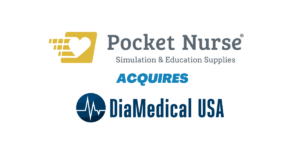
Pocket Nurse Acquires DiaMedical USA – Both Companies to Maintain Branding
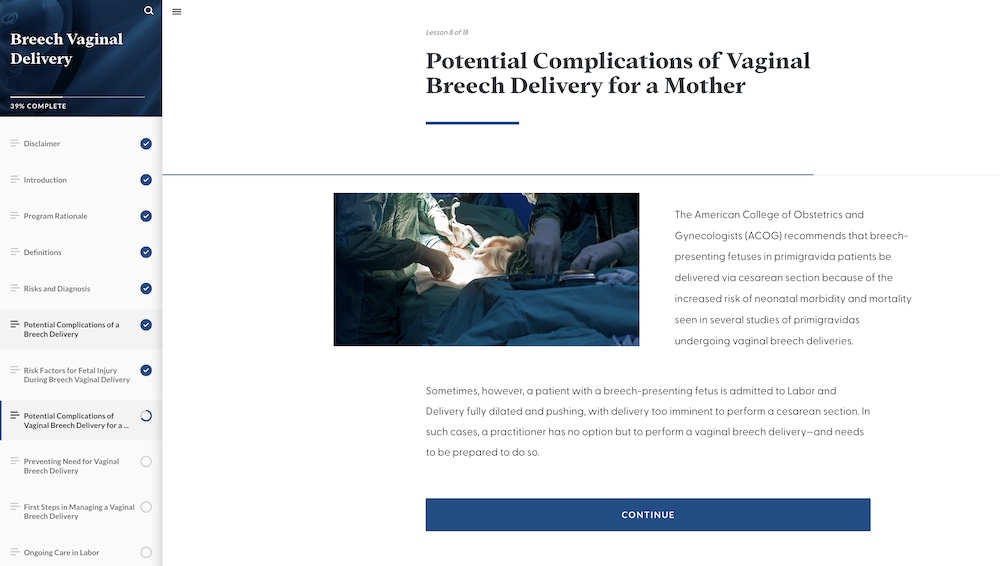
HealthStream’s New OB Safety SIMS Toolkit
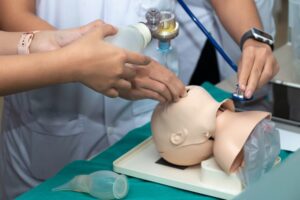
Developing a Healthcare Simulation for the Novice Simulation Educator

Customers Give High Marks to sim2grow’s Medication Administration System as a Game Changer for Improving Student Learning Outcomes

10 Commandments for the Medical Simulation Novice Debriefer
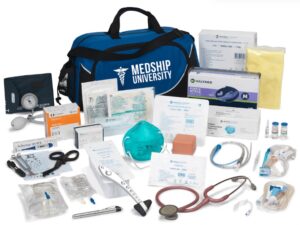
Medical Shipment Releases Nursing Kit Catalog

Defense Health Agency’s MST PMO Works to Optimize Warfighter Readiness and Improve Healthcare with Simulation

Latest Clinical Simulation News From Around the World | March 2023
Sponsored Content:








